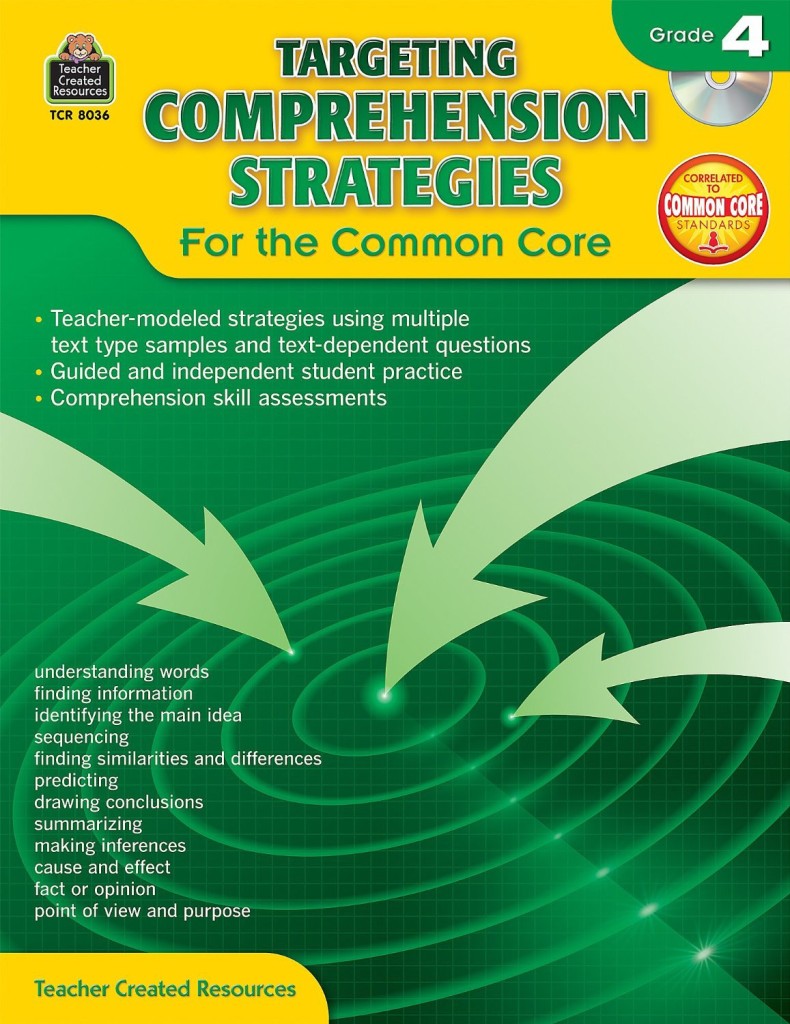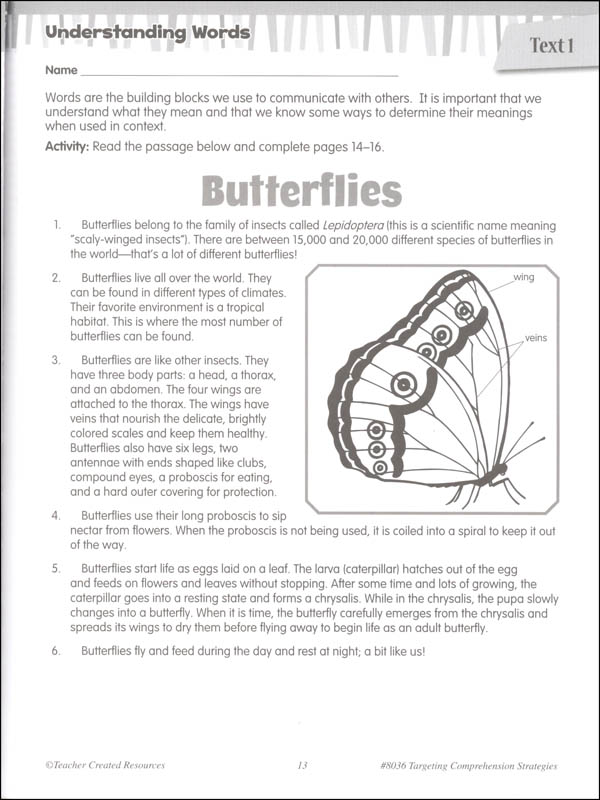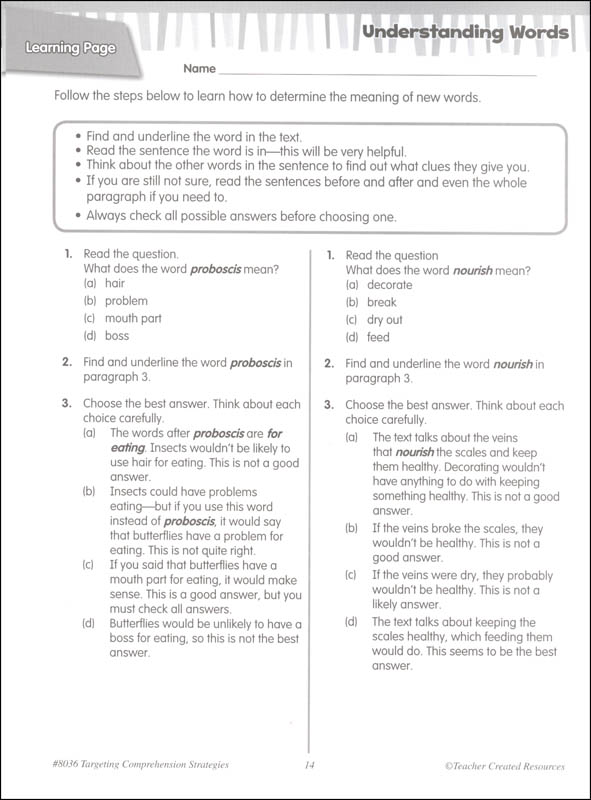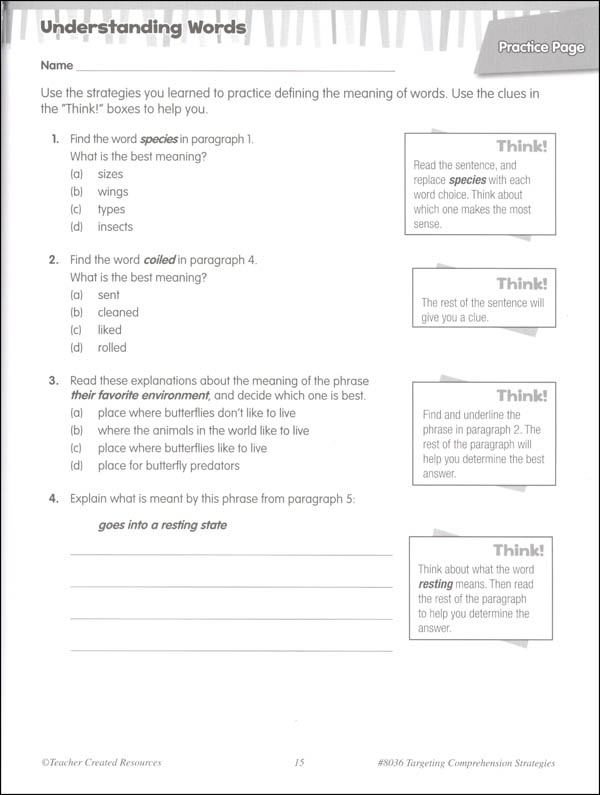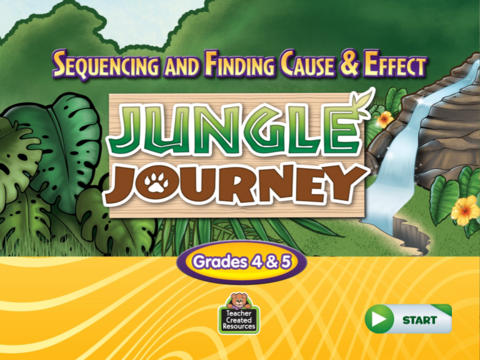Reading comprehension has always been a struggle for my 10 year old who is currently in 4th grade. I felt like 3rd grade was definitely a little more challenging, but 4th grade to it to a whole other level. We have a tutor come once a week who strictly works with him on just that. But now that summer is coming, I am going to be needing to spend more time on this with him so I have done a little research.
Last week, I headed out to a teachers resource store called Lakeshore Learning Center and picked up an amazing book called “Targeting comprehension strategies for the common core”. I believe it was about $15 but what I love about this book is it breaks each section into a separate paragraph making it much easier to follow along. Then there are questions about the story that they can answer. The high-interest reading passages cover a variety of text types. Assessment tests are included, and the CD provides easy access to printable student pages and Common Core correlations.
Download this app
When kids play this, they will journey through the jungle, and must respond correctly to questions about Sequencing and Finding Cause & Effect to win the game. Kids learn essential reading comprehension skills identified in the Common Core Standards while playing games. It’s for grades 4 and 5 and it definitely keeps their attention.
Download These Worksheets
Ways to stay on top of reading comprehension
- Separate what the child is reading into story grammar components: setting, main character, action, and outcome. Sometimes paragraphs become too cluttered and it’s hard to focus.
- Take turns reading aloud and find places to stop, discuss, make comments, give opinions, and relate to personal experiences. When parents read aloud, they should model correct inflection and feelings. Our tutor does this and we have found it to be super helpful.
- Listen to your child read aloud for a few minutes every day. The length of time should be appropriate for the child’s age (a minute for every year of age). The book he/she is reading aloud should be at a level slightly below his/her classroom instruction in order to foster reading fluency. Ask your child’s teacher for a suggested booklist.
- Read aloud to your child often from a book, magazine, or newspaper article. This helps build vocabulary. Ask questions frequently about the content and details, and ask him/her to retell the story to check the level of understanding.
- Talk about what your child reads to you. This helps him/her remember and think through the themes of the book. Ask your child questions about the content of the book before, during, and after reading. Use pictures or illustrations to extend discussion about the story or topic.
- Explore different forms of reading material. Take a trip to the library; check out a book and its companion audio tape or CD. Have your child read aloud with the narrator of the book while listening to the text on tape or CD. This helps the child learn to emulate inflection and feeling.
- Provide age-appropriate magazines! Children will read books and magazines over and over when it’s something
of interest to them.


